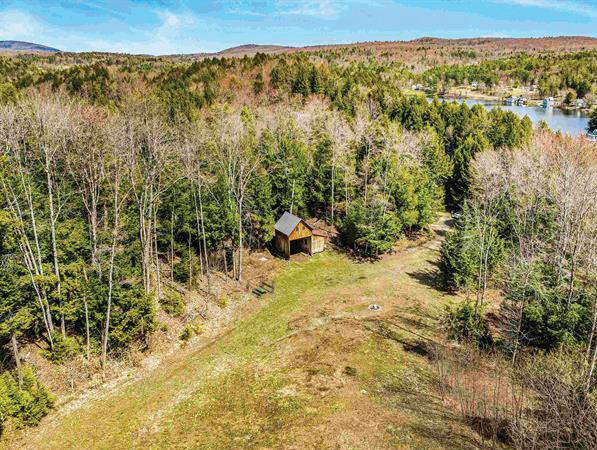
6 minute read
Invest in farms, food and infrastructure for a healthy Vermont
BY ANSON TEBBETTS
ADVERTISING SPACE DEADLINE
Friday at 5 p.m. for the next Thursday issue rick@willistonobserver.com, 802-373-2136
CLASSIFIED ADS
Deadline is Friday 5 p.m. There is a fee for business, real estate, help wanted and legal ads. Free classifieds must be 25 words or fewer and are printed on a space available basis.
SUBMISSIONS & LETTERS
Deadline is Monday noon for Thursday issue. News/ story tips are welcomed. Letters to the Editor must be 300 words or fewer and should include your name, address and a daytime phone number so that we can verify the letter’s author.
The Williston Observer reserves the right to edit or refuse submissions or advertising. Opinions expressed in the paper are those of the writer and do not necessarily reflect the opinion of the paper.
A publication of Twin Ponds Publishing LLC
P.O. Box 1401, Williston, VT 05495 | 802-489-5499 B A NG



Burlington Area Newspaper Group
As spring comes to the Green Mountains, shades of green slowly paint the contours of our rolling hills, valleys and farm fields. Farmers are planting crops; gardeners are sowing seeds in earnest.
Food and beverages are making their way to market. Visitors are traveling to Vermont for food, drink, experiences and beauty. Vermont once again unfolds into a new season, and the Green Mountains continue to provide the backdrop for farmers, producers and those making their living off the land.
Life meanders on — but clouds hang in the air as the Vermont Legislature, too, moves toward summer recess. If we do not invest in our food and farms, the system will suffer and along with it, the Vermont economy. Small communities in our rural regions are at risk. That is why the governor, and the Agency of Agriculture, Food and Markets are proposing that the Legislature invest more in Vermont’s aging agriculture infrastructure.

It’s our turn.
The Legislature is considering a $14 million dollar package that will help Vermont produce more leys means encouraging farmers to keep more animals on the land. More Vermonters would like to raise beef, lamb and goats, but aging meat processing facilities are challenged and stretched to capacity. That’s why investing in meat processing is good for Vermont’s future. We benefit by being able to eat more local meat, and animals keep our land open. food for the region and make our farmers more viable. Investing in those who make their living growing produce means more local food can be sold at our grocery stores, farm stands, institutions and farmers markets. It also means we can rely less on produce that is hauled thousands of miles before reaching our plate.
Maple is rooted in Vermont’s history, while also blazing a trail to the future. This iconic industry is growing, with care and investment. The governor’s proposal ensures that sugar-makers of all sizes, shapes and practices would be able to invest in their operations, expanding their reach to bring this natural sweetener further into the market. Vermont is the leading producer of maple in the United States. Let’s stay on top by investing in our sugarhouses and sugarbushes.
Investing in our hills and val-
Our working lands will retire unless we invest in their future. This is the 10th anniversary of the Working Lands Program. It has supported dozens of small businesses over the past decade, including entrepreneurs in Vermont’s dairy industry.
The Working Lands Program has supported new creameries, new products and new companies. The governor’s proposed budget invests $4 million in working lands because active agriculture see TEBBETTS page 8
Letters To The Editor
The unknowns of the Clean Heat Standard
Angela Arsenault’s article in last week’s Observer (“Why I voted ‘yes’ on the Affordable Heat Act”) claims there has been a great deal of misinformation about the Clean Heat Standard (S.5) bill passed by the Legislature.
She makes a contribution to that collection.
The Clean Heat Standard is not a study that can be paused if it’s found to have unintended consequences. The bill states its purpose is “to establish the Clean Heat Standard.”
It empowers state government to enact and implement rules without approval of elected legislators. As soon as this August, the Public Utility Commission is to start writing rules to implement the act. The House authorized $1,725,000 to the Public Utilities Commission and Department of Public Service for this purpose. Consid- ering the harsh, far-reaching nature of S.5, shouldn’t the Legislature be certain of its effects before, not after, passage?
Rep. Arseneault claims S.5 will benefit low-moderate income Vermonters. But all consumers will be forced to pay higher prices for heating oil, propane, natural gas and kerosene, and that money will be used to fund the program. Low-income people either will have to pay for upfront costs, even with subsidies, to switch to wood or heat pumps, or pay more for heating their homes. It is false that the Clean Heat Standard will not mandate a change. That change will disproportionately burden those less able to pay.
Rep. Arsenault also claims the Clean Heat Standard will move away from price volatility inherent in the home heating fuel market. She makes no mention of what the energy market would be like under the Clean Heat Standard, or whether there will be a sufficient supply. A drastic shift in sourcing energy should not be made without a reliable understanding of the cost and availability of alternatives.




Bret Powell Williston
Trust the science
Thank you for printing “Regulated trapping is key to wildlife conservation” by Brehan Furfey in the April 20 edition. We are fortunate in Vermont to have a dedicated team of state scientists whose mission, first and foremost, is to ensure the health and well-being of our fish and wildlife. Our wild resources are being well-managed based upon good science, reason and data. As a result, Vermont wildlife are flourishing, to the benefit of all stake holders.
Rick Reed Williston
Cvsd
continued from page 1 develop an overall facilities plan that takes into account capacity issues at Allen Brook and Hinesburg Community School as those towns continue to see population growth. Asking those towns to implement school impact fees on new developments will likely be part of the plan, Marckres said.
“The discussions need to start at the town level, taking a look at what is permitted now, what additional (growth) they are expecting … Then study the impact,” he said.
A long-term facilities study would also address the possibility of school restructuring and consolidation.
“Those are deeply emotional (conversations),” Marckres said.

Tebbetts
continued from page 6 supports the food and forest economy, the benefits of which are turned back into our rural communities. Let’s keep the momentum in our working lands moving forward before the Legislature adjourns for the year.
As the legislative session winds down, we encourage you to connect with your representatives or senators about the importance of investing in Vermont’s future by supporting programs that help our rural villages and towns grow. This includes direct investment in agriculture, but also financing expansions in broadband, water, sewer and transportation. All these areas are also critical to the future of our agriculture and those who feed us.



Those who work the land contribute to so many businesses, from hospitality to people who rely on farmers to purchase supplies, feed and fertilizers. Now is the time to invest in rural Vermont and agriculture.
Our farmers and those who support them in the Green Mountains are worthy of support and celebration — today, tomorrow and every day.
Anson Tebbetts is secretary of the Vermont Agency of Agriculture, Food and Markets.
BB&B
continued from page 1
“The location is great because it’s near a bunch of the other retailers that are really doing well … so it’s likely someone is going to be interested in it from a retail concept.”

Bed Bath & Beyond is pursuing a “dual-path” bankruptcy, according to its news release, where it will attempt to sell some or all of its assets during liquidation. Davis said existing retailers sometimes look to acquire multiple locations of a retailer in bankruptcy, taking over leases and rebranding stores. This is similar to what happened when REI went into the former Toys ‘R’ Us location nearby, Davis said.
“That’s probably what will happen here,” he said. “We’ll see what happens over the next couple of months.”
Any redevelopment or change-of-use at the site would fall under the town’s new zoning regulations for the Taft Corners area — the “form-based code” that the selectboard approved last year. No development applications have yet been filed under the code.
Davis is in the conceptual stage of what may be the first, on a parcel north of Hannaford with “three obsolete metal buildings” on it, he said. That parcel is next to a J.L. Davis parcel that was approved under the old land use regulations for a new Aldi grocery store. That project has yet to break ground.

















Little Leaguers launch new season



Williston’s oldest (Majors) Little League team got a preseason win in Essex Junction last Thursday. Several players from last year’s state runner-up team are returning for a final Little League season. The regular season began Monday, and the team will play a regular season through early June, with three games a week against South Burlington, Essex, Richmond and other nearby opponents. Postseason play begins in mid-June.
Left, Shivaji Arumugam makes a throw from third during pregame practice in Essex Junction; Teague Flattery, below, makes a catch at third base and Dylan Morris, bottom, takes a turn at bat.
Spring Open House

Sunday, May 7th











